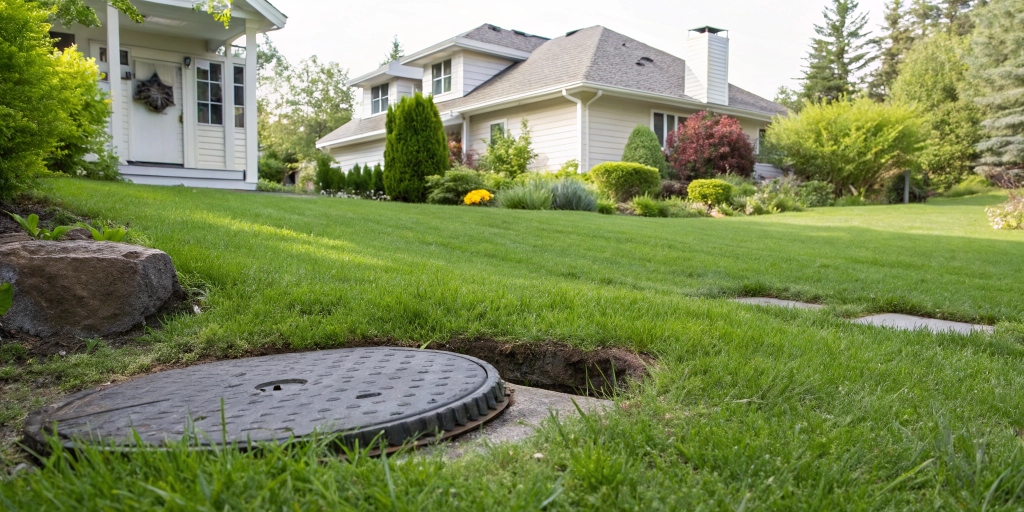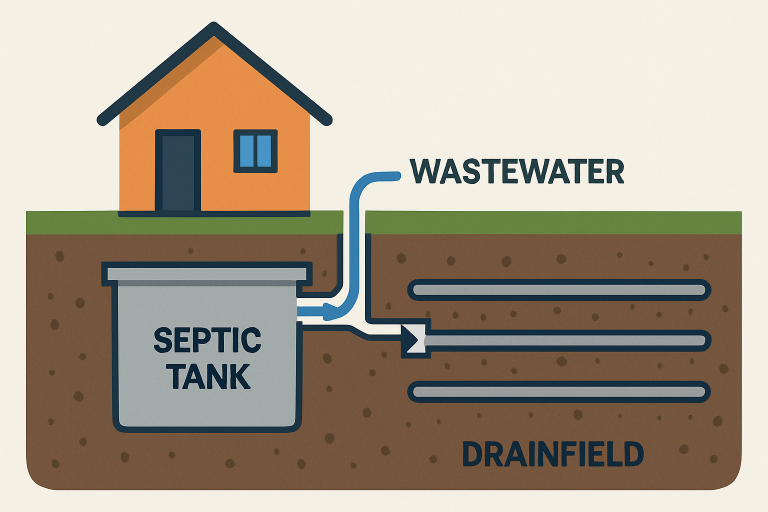
Smart Strategies for Maintaining a Healthy Septic System
A well-functioning septic system is essential for protecting your home, health, and the environment. While often overlooked, this underground system is critical in safely treating and disposing of wastewater. Neglecting maintenance can lead to costly repairs, foul odors, and even soil and groundwater contamination. Fortunately, with the proper care and preventative measures, homeowners can extend the life of their septic systems and avoid unnecessary problems. Understanding how to maintain this hidden yet vital infrastructure properly is the first step toward long-term efficiency and peace of mind.
How Septic Systems Work: A Quick Overview
A properly functioning septic system provides an invisible backbone to residential properties, quietly treating household wastewater daily. Knowing how septic systems separate and treat waste is crucial for homeowners. In simple terms, solids settle in the tank, while pre-treated water passes into a drainfield for further natural filtration. Over time, these systems require care and intervention to stay effective. If you’re considering upgrades, repairs, or a new installation, working with an expert in Cincinnati septic tank installation & repair helps eliminate guesswork and ensures your system operates efficiently.
Understanding the inner workings of septic systems also empowers homeowners to respond quickly to early warning signs, minimizing the risks of leaks, backups, or groundwater contamination. By keeping up with regular care and scheduling timely professional inspections, you safeguard your home’s value and the surrounding environment.

Signs of Trouble: Common Warning Signs
Septic system failures rarely strike suddenly. Small red flags nearly always precede them. Watch for empty drains more slowly than usual, toilets that gurgle, or unexplained soggy areas and unusually green, spongy grass near your drainfield. These symptoms often point to blockages, overload, or potential system breakdown. One of the most concerning warning signs is the unmistakable smell of sewage in your yard or near drains indoors. This may indicate that effluent is not adequately processed, which calls for immediate professional help. The consequences of ignoring these signs can be severe, including costly remediation and serious health risks.
Routine Maintenance Tips
To maintain a septic tank, schedule an annual inspection by a licensed professional, especially for large households or those using a garbage disposal. Pump the tank every three to five years, adjusting the schedule based on household size and water usage. Keep a log of inspections, repairs, and tank pumpings for future maintenance. Address small plumbing issues promptly to prevent premature failure. Regular planning and routine care can save thousands over the system’s lifespan, preventing catastrophic failures and mitigating property value and health risks.
What Not to Flush or Pour Down the Drain
Homeowners must be mindful of what makes its way into the septic system. Only toilet paper and human waste should be flushed—never so-called “flushable” wipes, feminine hygiene products, diapers, or dental floss. Keep kitchen grease, oils, paint, and toxic chemicals far from drains. Even a few of these substances can clog or poison the delicate bacterial balance essential for your tank’s natural breakdown processes. When in doubt, remember this rule: if it isn’t biodegradable and septic-safe, it should be placed in the trash, not the drain.
Landscaping and Drainage: Protecting the Drainfield
To maintain a healthy drainfield, avoid planting trees or shrubs near it, as their roots can infiltrate pipes and cause damage. Grad your yard to prevent oversaturation and system overload. Avoid placing heavy objects or vehicles on the drainfield, as compressed soil limits wastewater filtration and can crush pipes. Choose grasses or shallow-rooted ground cover directly over the drainfield for soil stability and healthy drainage. Careful landscaping and water control can extend the lifespan of your septic system.
Innovative Technologies in Septic Maintenance
Technology is making septic system care easier and more effective. Some modern systems include smart monitoring sensors that deliver real-time alerts if your tank requires pumping or experiences unusual conditions. Aerobic treatment units introduce oxygen into the system, boosting the breakdown of solids in homes with higher water use. While various commercial biological additives are marketed to improve septic health, the EPA suggests these claims should be treated cautiously: routine maintenance and professional guidance remain the most reliable path to a healthy system. Always consult with a professional before investing in new technology.
When to Schedule a Professional Inspection
Routine septic checks are crucial for identifying minor issues before they escalate. Schedule an inspection when buying or selling a home with a septic system, hosting large gatherings, experiencing major plumbing issues, or experiencing excessive rainfall. Professional evaluations ensure optimal system performance for years, preventing backups or costly repairs.
Conclusion
Caring for a septic system requires homeowner diligence and professional expertise. From knowing what not to flush to scheduling routine inspections, each step helps prevent costly breakdowns and protects your property and the environment. Modern technologies offer added support, but consistent maintenance habits remain the most effective safeguard. By staying attentive to early warning signs and partnering with trusted professionals when needed, you ensure your septic system continues to operate smoothly, supporting your household’s needs for years to come.


Average Rating